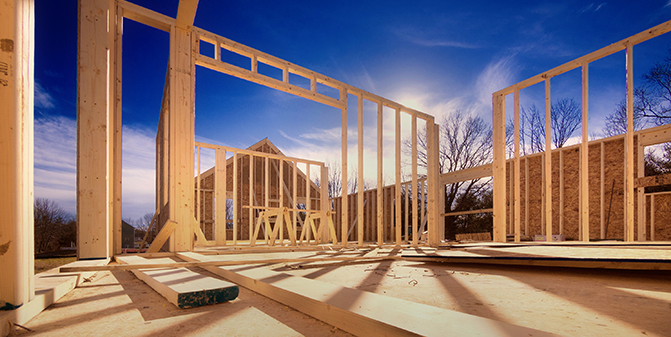Building Energy Codes: Why Should Homeowners Care?
Let's Save Energy
Alliance to Save Energy's Blog

The principal beneficiary of building energy codes is the average homeowner. Homeowners who purchase new houses built to the specifications of updated building energy codes can be more confident in the long term value, sustainability and return on their investments. It is reasonable for homeowners to assume that newer homes are more energy efficient than ones built 10, 20, or 30 years ago. Recent efficiency gains in building energy codes, developed and implemented by state and local officials, have effectively turned an assumption of energy efficiency into an assurance.
Opponents to robust building energy codes often claim that the incremental price of modern efficiency measures is too high. However, when the National Association of Home Builders (NAHB) surveyed homeowners across the country in 2012, it found that homeowners overwhelmingly put energy efficiency at the top of their list of essential and desirable features. In a widely quoted statement, NAHB declared: “Nine out of ten buyers would rather buy a home with energy-efficient features and permanently lower utility bills than one without those features that costs two percent to three percent less.” Note that I added emphasis to this quotation – I did this because it implies a longer-term perspective on the part of the homeowners surveyed. Permanent energy-efficiency improvements—or at least those that last a lifetime—are exactly the focus of building energy codes: measures like wall and ceiling insulation that are built into the structure itself.
But at what cost? Well, the average incremental costs of energy efficiency measures to meet the 2012 version of the International Energy Conservation Code (compared to its 2009 predecessor) is between about $1,500 and $2,200 (depending on geography and climate zone), according to the Building Codes Assistance Project. But consider that the annual energy savings resulting from those improvements is considerable: about $300 and $400 on average. And when you factor in the effects of financing a purchase with a typical 30-year mortgage—who among us pays cash and incurs the full up-front cost of a house?—an average homeowner buying a code-compliant home would realize net savings within two years.
Some efficiency opponents say that these costs lead to more expensive homes and actually keep homeowners out of the market. In reality, home prices are a function of several factors including—but not limited to—the costs of construction. In 2015, researchers with the Benningfield Group and the UCLA Anderson Forecast examined construction costs and home prices in California and produced a white paper that contained some interesting findings. Using data through 2014, the researchers did not “find evidence that construction cost increases caused higher home prices in California [or] in inland portions of California.” Then, they went further and looked at costs, prices and building energy codes: “We cannot find statistically significant evidence that California’s energy efficiency code Title 24 is associated with home construction costs in eight metropolitan areas in California, of which two are in inland California.”
If the incremental costs of energy efficiency are so grievous, why are the loudest protests not coming from advocates for low-income family housing rather than efficiency opponents? Because they understand how two factors affect low-income Americans. First, many low-income families rent, which means they cannot control how much energy efficiency is built into a house. Rather, they rely on building energy codes to ensure a minimum standard of efficiency. And second, low-income housing advocates know that energy bills are the highest and most unpredictable cost of maintaining and paying for a home. Measures that permanently—again, an important point of emphasis—lower utility bills make homeownership more affordable for more Americans.
Homeowners may assume that newer is better, and better is more efficient. Well, maybe. But how can an average homeowner be sure that wall and ceiling insulation, for example, are not being shortchanged for more superficial—yet still enticing—upgrades to kitchen or bath finishes? How can homeowners be sure that a house built today is more efficient than one built in 1980? The answer to both of these questions (and more) is simple: building energy codes.
STAY EMPOWERED
Help the Alliance advocate for policies to use energy more efficiently – supporting job creation, reduced emissions, and lower costs. Contact your member of Congress.
Energy efficiency is smart, nonpartisan, and practical. So are we. Our strength comes from an unparalleled group of Alliance Associates working collaboratively under the Alliance umbrella to pave the way for energy efficiency gains.
The power of efficiency is in your hands. Supporting the Alliance means supporting a vision for using energy more productively to achieve economic growth, a cleaner environment, and greater energy security, affordability, and reliability.



